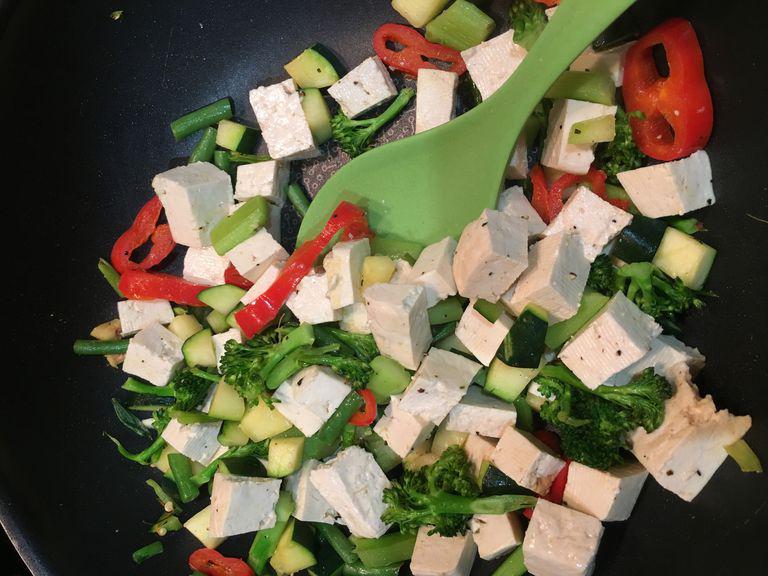People with milk allergies cannot eat calcium-rich foods, or they risk experiencing allergic reactions. So what foods can they eat?
Their best option is to increase their intake of non-dairy calcium-rich foods. Choices range from calcium-fortified orange juice to tofu and certain green vegetables, such as kale.
Calcium Strengthens Bones
Children need calcium to help their bones develop. Bones grow rapidly during childhood and adolescence—in fact, this timeframe is referred to as the peak bone growth period of life.
Essentially, like a bank, the calcium in the foods we eat gets deposited in our bones, helping them grow and strengthen. This process occurs at the fastest rate during the second and third decades of youth. After adulthood, bone accumulation stops, and we begin to need to maintain bone quality.
Getting enough calcium (and vitamin D) daily helps maintain bone density. Once bone growth is complete, the bone bank extraction system begins to work. If calcium intake is insufficient, the bone bank will provide calcium for the normal functioning of other tissues, especially the heart and muscles.
Therefore, it is important to build as much bone as possible during childhood and adolescence, and partly maintain the integrity of bones in adulthood by consuming sufficient calcium-rich foods.
According to the Institute of Medicine (IOM), here are the dietary reference intakes (DRI) for calcium for all age groups:
- 1-3 years: 700 milligrams (mg) of calcium per day
- 4-8 years: 1,000 mg of calcium per day
- 9-13 years: 1,300 mg of calcium per day
- 14-18 years: 1,300 mg of calcium per day
- 19-50 years: 1,000 mg of calcium per day
- Men aged 51-70: 1,000 mg of calcium per day
- Women aged 51-70: 1,200 mg of calcium per day
- Age 70 and older: 1,200 mg of calcium per day
Calcium and Dairy Allergies
When you have a food allergy to milk, it can impair the ongoing and adequate intake of calcium, which can be a real issue during those peak bone-building years. In fact, data on intake consistently shows that this age group’s diet lacks sufficient calcium, making girls aged 9-18 particularly vulnerable to bone health issues. Girls with a food allergy to milk face a higher risk.
Fortunately, four out of five children are no longer allergic to milk by age 5, and most of the remaining will see their milk allergy resolve during adolescence. However, when children and teenagers with milk allergies need a lot of calcium but cannot obtain it from dairy products, this can still take years or longer. Adults without dairy also need to find appropriate alternatives.
Non-Dairy Calcium Sources
Milk alternatives can be a source of calcium, but not all milk alternatives are the same. Some soy milks have calcium content similar to that of milk (about 300 mg per cup), while others may vary in calcium content. Additionally, calcium may be added to alternative milks (as opposed to being naturally present in regular milk), and the calcium may settle at the bottom of the milk container. Be sure to shake the alternative milk before drinking and read the ingredient label for the maximum calcium content per cup of non-dairy milk.
Other non-dairy foods contain calcium, and many people find it easy to meet their calcium needs with just these foods. This is possible because there are certainly many foods to choose from, but you will need to eat a lot of food. Also, keep in mind that if you are dealing with a child who has a milk allergy, it may be challenging to get them to eat some of these non-dairy calcium-rich foods.
Here is a list of non-dairy foods that contain calcium, along with the dietary amounts needed to match the calcium content of 8 ounces of milk (remember, you need more than 3 cups of milk daily to meet the recommended daily calcium allocation).
How much do I need to eat to match the calcium in milk?
Food
Equals 300 mg of calcium
Calcium-fortified orange juice
1 cup
Sardines, canned in oil
3 ounces
Firm tofu made with calcium sulfate
½ cup
Canned salmon
3 ounces
Soft tofu made with calcium sulfate
1 cup
Fresh turnip greens
1½ cups
Fresh kale
1½ cups
Collard greens
4 cups
White bread
4 slices
Broccoli
7½ cups
Okra
4 cups
Hummus
2½ cups
Canned navy beans
3 cups
Sesame seeds
4 tablespoons
Blackstrap molasses
2 tablespoons
While this list highlights some of the best sources of calcium in various foods, you certainly do not need to limit yourself to the calcium sources listed here.
For example, navy beans are an important source of calcium, as are white beans, which contain 126 mg of calcium per cup of cooked beans. The calcium content in kidney beans is slightly lower (62 mg per cup of cooked beans), but if you enjoy them, don’t let that stop you from eating them… or better yet, mix them into this four-bean salad recipe.
Similarly, collard greens, turnip greens, and kale can provide you with a lot of calcium, but kale (268 mg per cup of cooked greens) and spinach (244 mg per cup of cooked spinach) also do.
From the WellWell
For children and adults who cannot consume dairy to get enough calcium, this can be a challenge. Unless you eat a lot of tofu every day or have canned salmon for dinner every night, you may find it difficult to meet your daily needs.
If you are concerned that you or a child with a milk allergy may not be getting enough calcium from food, consult a nutrition expert who can help you develop a meal plan that meets your unique needs. You may also need to consult your allergist about calcium supplementation. Multivitamin and mineral supplements often do not contain significant amounts of calcium, so you may need separate calcium supplements or calcium + vitamin D chewables.
